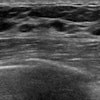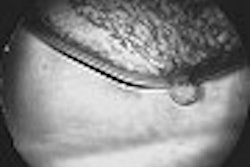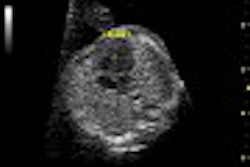Most infants born with ureteropelvic junction (UPJ) obstruction do not need corrective surgery and can instead be managed with sonographic watchful waiting, according to Dr. Dirk Müller-Wiefel from the University of Hamburg in Germany. The key predictor is whether the child has a dilated renal pelvic diameter; such a finding nearly doubles the likelihood of needing surgery.
In a presentation at the 2003 World Congress of Nephrology in Berlin, Müller-Wiefel, who is the head of pediatric nephrology at the university, said the ability to assess when surgery is needed reflects how advances in imaging technology have facilitated doctors’ understanding of UPJ obstruction.
"At an earlier time we thought that all infants with UPJ obstruction required surgery," he said. "Now we know that 1% to 2% of all children are born with this anomaly, and that only a minority require surgery."
Because watchful waiting can increase the risk of irreversible renal damage, urologists often monitor UPJ obstruction with a furosemide washout, along with isotope renograms and ultrasound. Müller-Wiefel and his co-investigators used the data from a previous prospective study of watchful waiting.
The investigators reviewed the records of 48 children with UPJ obstruction who had been followed for an average of 24 months. The children were followed with watchful waiting if their split renal function was normal and if they had no additional pathology. Their physicians used clinical examinations as well as standard and duplex Doppler sonography and isotope renograms at 3, 6, 18, and 30 months after the children were enrolled in the study.
The children underwent delayed pyeloplasty if their physicians documented functional deterioration. Müller-Wiefel and his investigative team assessed the ability of several characteristics at study entrance to predict subsequent renal deterioration, including furosemide washout characteristics, ipsilateral and contralateral renal lengths, pelvic diameters, and resistive indices.
Among these children, four (8.3%) underwent delayed pyeloplasty due to renal deterioration. Their most recent preoperative furosemide washout was reduced, and the pelvic diameter had increased significantly in the kidneys compared to those with stable function. In contrast, renal length and resistive indices were similar among the kidneys, he said.
The group found that renal pelvic diameter was linked to an increase in risk ratio of 1.183 for every millimeter in diameter that such kidneys were significantly dilated over the average (p<0.05). They concluded that renal pelvic dilatation was the only factor that significantly predicted future renal function. Other parameters typically used, such as furosemide washout, renal length, and resistive index, had no prognostic significance, he said.
"An increase in renal pelvic diameter indicates that a child’s kidneys are at risk, and that pyeloplasty is necessary," Müller-Wiefel said. However, if the renal pelvic diameter is unchanged, "watchful waiting can continue and the child can be spared an unnecessary surgery."
Radiologists should find Müller-Wiefel and his colleagues’ study helpful, said Dr. Edward Lyons, commenting on the study. Lyons is a professor of radiology, obstetrics and gynecology, and anatomy at the University of Manitoba in Winnipeg, Manitoba, Canada.
"This study has useful information for radiologists in general, because UPJ obstruction is a common problem," Lyons said. "Monitoring the pelvic diameter is of value. If the recommended follow-up is to look at the patient’s renal pelvic diameter, this is a simple matter. The investigators’ findings will make people comfortable that renal pelvic dilatation is a predictive indicator of the need for surgery."
By Paula MoyerAuntMinnie.com contributing writer
July 23, 2003
Related Reading
Umbilical artery Doppler has edge in fetal distress screening, June 19, 2003
Ultrasound scans identify high-risk fetuses in a low-risk population, April 8, 2003
Copyright © 2003 AuntMinnie.com



















